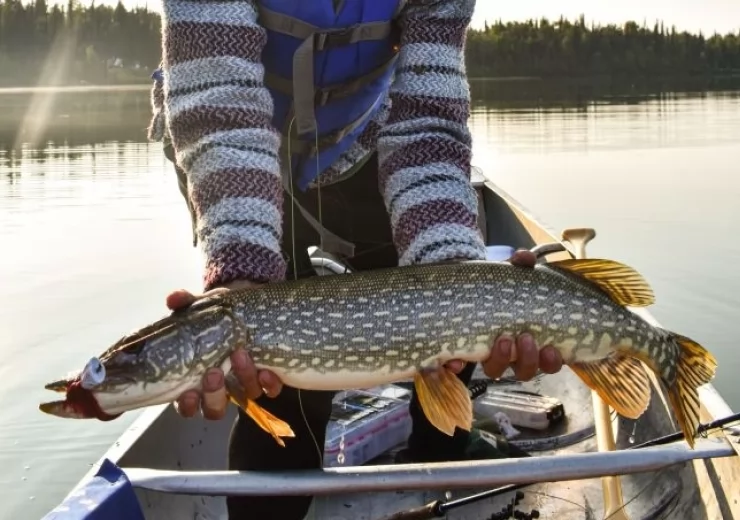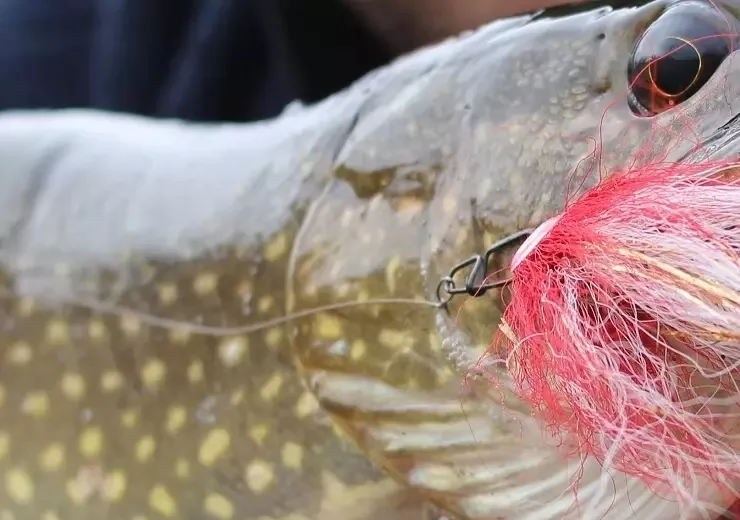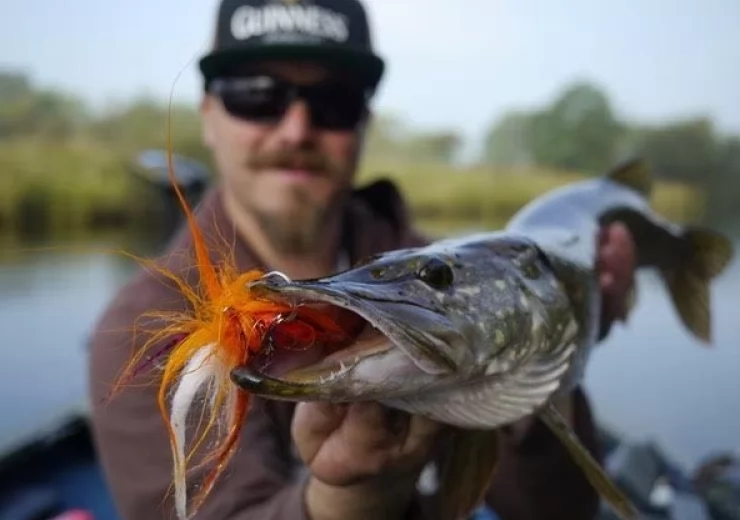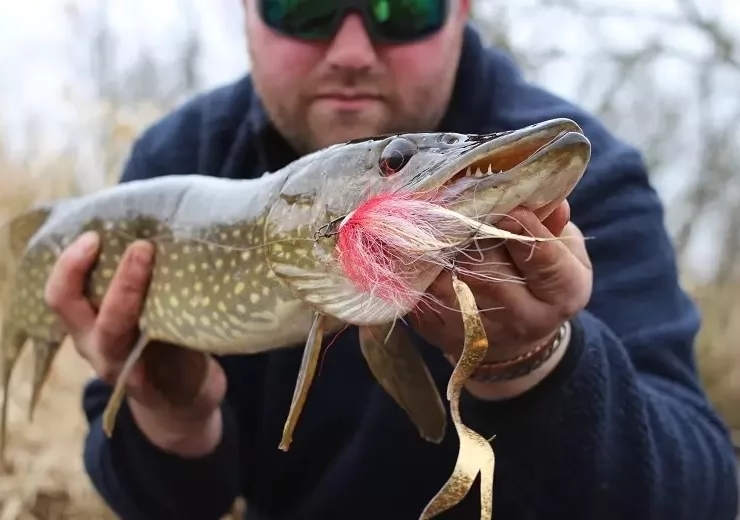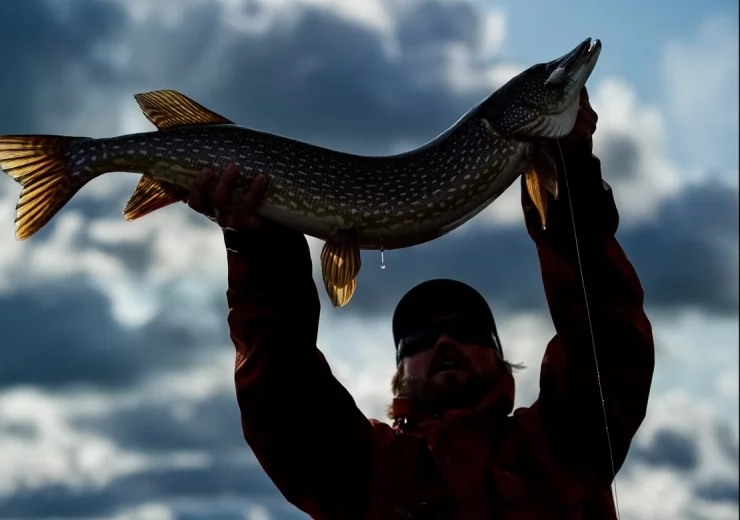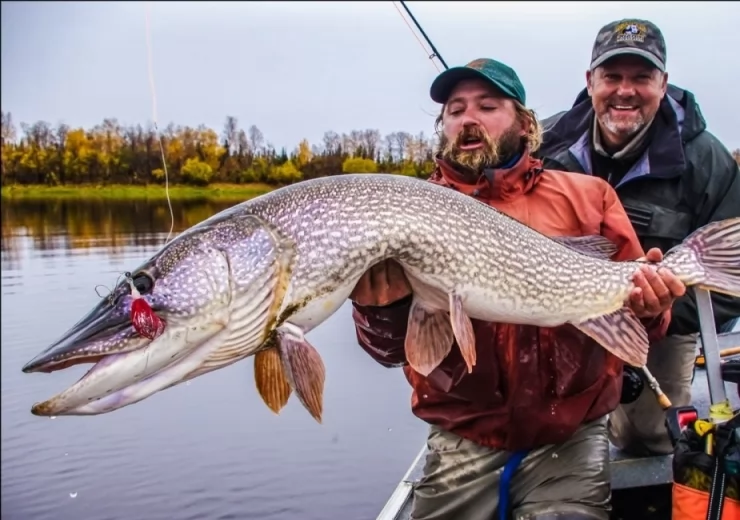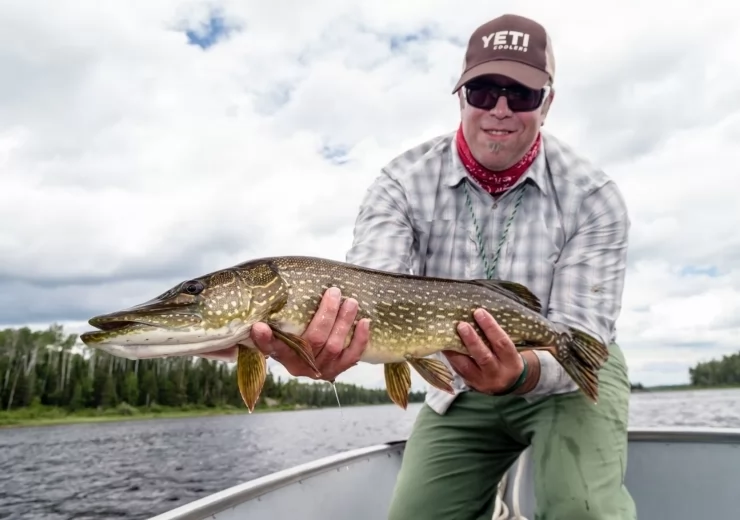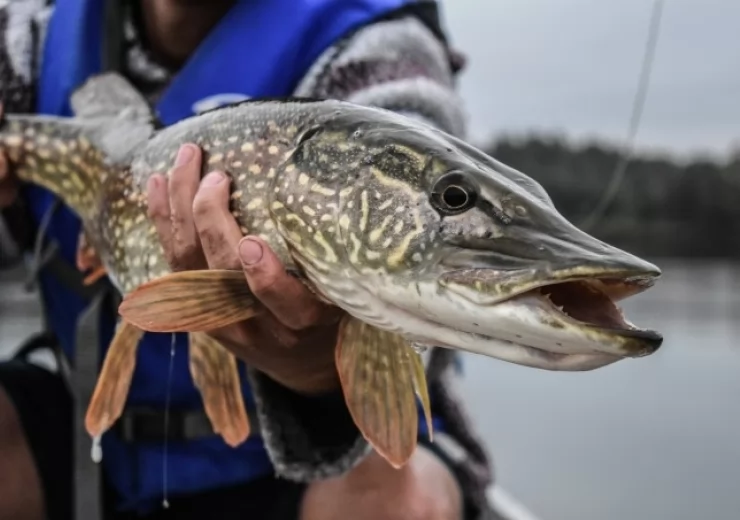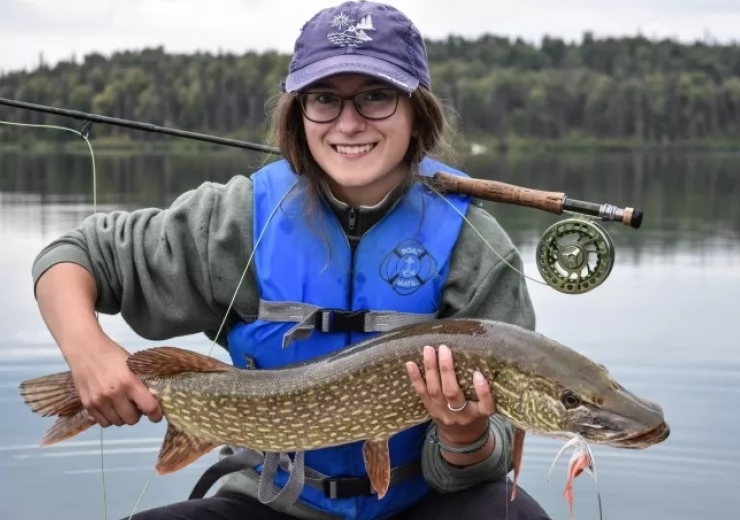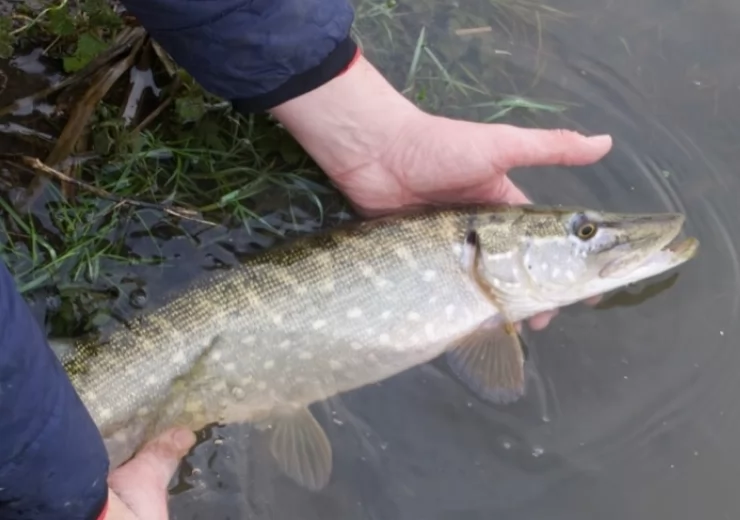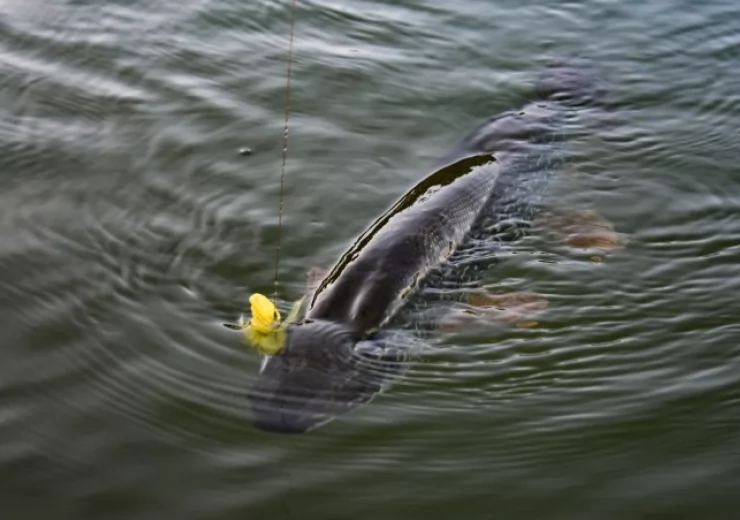Overview
HABITAT
Pike are found in sluggish streams and shallow, weedy places in lakes and reservoirs, as well as in cold, clear, rocky waters. They are typical ambush predators; they lie in wait for prey, holding perfectly still for long periods, and then exhibit remarkable acceleration as they strike.
They inhabit any water body that contains fish, but suitable places for spawning are also essential. Because of their cannibalistic nature, young pike need places where they can take shelter between plants so they are not eaten. In both cases, rich submerged vegetation is needed. Pike are seldom found in brackish water, except for the Baltic Sea area, here they can be found spending time both in the mouths of rivers and in the open brackish waters of the Baltic Sea. It is normal for pike to return to fresh water after a period in these brackish waters. They seem to prefer water with less turbidity, but that is likely related to their dependence on the presence of vegetation.
FEEDING
Solitary hunters, pikes, pickerel, and muskellunge lie motionless in the water or lurk in a clump of weeds. As the prey comes within reach, they make a sudden rapid lunge and seize it. They usually eat small fishes, insects, and aquatic invertebrates, but larger forms also take waterfowl and small mammals. They spawn in weedy shallows from late winter through spring.
A pike has a very typical hunting behavior; it is able to remain stationary in the water by moving the last fin rays of the dorsal fins and the pectoral fins. Before striking, it bends its body and darts out to the prey using the large surface of its caudal fin, dorsal fin, and anal fin to propel itself. The fish has a distinctive habit of catching its prey sideways in the mouth, immobilising it with its sharp, backward-pointing teeth, and then turning the prey headfirst to swallow it. For larger prey, the pike will usually attempt to drown the prey before carrying it off to be consumed. It eats mainly fish and frogs, but also small mammals and birds fall prey to pike. Young pike have been found dead from choking on a pike of a similar size, an observation referred to by the renowned English poet Ted Hughes in his famous poem "Pike". Northern pike also feed on insects, crayfish, and leeches. They are not very particular and eat spiny fish like perch, and will even take fish as small as sticklebacks if they are the only available prey.
Pike have been observed hunting and attempting to eat larger waterbirds, such as an incident in 2016 when an individual was observed trying to drown and eat a great crested grebe, as well as an incident the previous year where an attack by a large pike between three and four feet long was implicated as a possible cause for the injury and death of an adult mute swan on Lower Lough Erne, Northern Ireland, but it is generally believed that such attacks are only rare occurrences.
The fishing
The fishing
When talking about the holy grail of pike fishing, there are few freshwater experiences more electrifying than catching a pike on the fly. For many anglers, targeting northern pike on the fly can offer some of the most aggressive takes that you will find anywhere in the world; a defining factor that makes them an incredible species to target. Imagine yourself standing in your boat sight fishing the grass edges in the shallows for a merciless predator. You throw out a fly that’s as long as your forearm. Then, watching your retrieve, the calm water surface suddenly erupts in a violent explosion as the visual take of a pike destroys your fly with tremendous speed and power.
Pike is a lethal fish because they prey on just about everything ranging from other fish, birds, rodents, and amphibians. Named for their resemblance to the ancient pole-weapon known as the pike, this ambush predator’s attack mimics their namesake. They will lie and wait, holding perfectly still for long periods until their prey comes near. Being the fastest accelerating freshwater fish, when they do go for the fly, it happens incredibly quickly exhibiting remarkable acceleration as they strike. For them, the hunt is always on.
Gear and equipment
RODS
Fly fishing for pike requires heavier rods compared to those used for trout in streams and lakes. Rods suitable for pike fly fishing generally range in weights from #7-10 with the most versatile rod being an 8- or a 9-weight. Both of these rods rod allows you to cast all except the largest pike flies and the 8-weight also have the added benefit of doubling as a rod suitable for bass fly fishing.
Fly fishing for pike requires heavier rods for several reasons and when choosing a rod you should consider factors such as the fly size, the wind, and weed conditions (cover) you are most likely to encounter on the lakes and rivers you fish the most. Each of these considerations is covered in more detail below.
The size of the fly is a major determinant of what rod to use. The larger, bulkier and wind resistant the fly is the harder it will be to cast and therefore necessitates more of your rod. Most pike flies will average 4-9 inches in length and are generally well suitable for an 8-weight rod. If you are planning to use larger flies than that you are better off going with a 9- or a 10-weight rod. Larger flies will also invariably also attract bigger fish which is some lakes and rivers can reach weights of 20 lb or more and a heavier rod will allow you to more efficiently fight these larger trophy fish.
Pike is also a weed-oriented fish and a heavier rod allows you to fight the fish out of cover that could cause you to loose the fish. If there is plenty of nasty weed cover around choose to go with a 9-weight to be able to better control the fish once it is hooked.
The last thing to consider is the wind. In heavier winds more is required of your rod to generate enough line speed to fire the fly to its designated target area. If you know that the waters you fish the most are prone to windy conditions I would certainly suggest to upsize to a 9-weight rod.
REEL
Although most pike do not require fighting them on the reel it is always best to choose a reel with a large arbor. This will allow you to pick up line faster and better control the fish when the situation arises. It is also good to choose a reel with a decent drag system for fights with those larger fish that might pull some line.
Finally, consider purchasing a reel with a cassette system. This will allow you to very quickly switch between different types of fly lines whether it being a floating line, intermediate or full sinking line and is far more economical than buying an individual reel for each line type. Fly lines for pike are discussed further below.
FLY LINE
The first choice of a fly line for pike is very different from that you might be used to fishing for trout in streams and rivers. Compared to trout fishing, a floating line is probably one of the least used when fly fishing for pike. This type of line is only really required when fishing topwater flies such as poppers or when fishing a slightly weighted fly just beneath the surface.
Instead, the most versatile fly line is in my opinion a type 3 sinking line, which sinks with a rate of 3-5” per second. This line will allow you to efficiently fish both shallow (1-5 feet) and even intermediate depths (5-10 feet). Pike have their eyes on the top of their head and therefore tend to feed upwards in the water column and there is therefore no need to get your fly all the way down and bounce bottom which is more important when fishing for bass. An intermediate line with a sinking rate of 1-3" per second will also work well for shallow (1-5’) depths or when fishing the fly just above the top of the weeds.
During the warmer months of the year pike tend to strike flies that are stripped with a fast speed using techniques such as the “Rolly Polly”. However, stripping flies with a faster speed forces then higher in the water column and out of the striking zone. To counteract this, and maintain depth, consider using a heavier sinking line such as a type 6-7 sinking line which has a sinking rate of 6-8” per second.
Although, it is hard to efficiently target fish in depths of 15 feet or more while fly fishing, a type 6-7 sinking line combined with a heavily weighted fly would also be a good choice if you choose to do so. However, the only time you might need to target these depths is during the summer when larger pike head for the deeper parts of the main basin of the lake in search of cooler water temperatures. Smaller pike generally do stay shallow even during the height of summer, and the larger specimen do feed in the shallows as well if the conditions are right so opportunities for pike are still abound even without targeting the abyss.
Finally, consider using fly lines designed with heavier heads such as Scientific Anglers Mastery Titan fly line. These lines facilitate turning over large pike flies.
LEADER & TIPPET
When it comes to leaders and tippets for pike fly fishing it is time to go big or go home. As mentioned above the majority of flies used for pike are large and on average between 4-9”in length which requires a powerful leader to turn over the flies properly. In addition, pike have very sharp teeth and are notorious for biting off even heavy mono tippets and a wire tippet is therefore required.
See our guide “how to set up a pike fly fishing leader with a wire tippet” for complete instructions on how to set up your own pike leader.
FLIES
Typical flies used to target pike can be anywhere from 6-18 inches in length. They can vary from topwater flies like mouse, frog, or popper patterns to using variations of streamer flies made from deer hair, rabbit fur, and lots of feathers wrapped around big hooks. Usually, the flies used are big and flashy to entice a strike. At times the uglier and the bigger the fly is, the better!
Topwater patterns are very effective because they churn up water and make noise. When you cast using a topwater pattern like a mouse, frog or popper and start stripping, pike aggression will kick in and they will suddenly b-line straight for it.
Sometimes you’ll even see the fast-moving wakes from 2, 3, or even 5 pike chasing your fly all at once.

